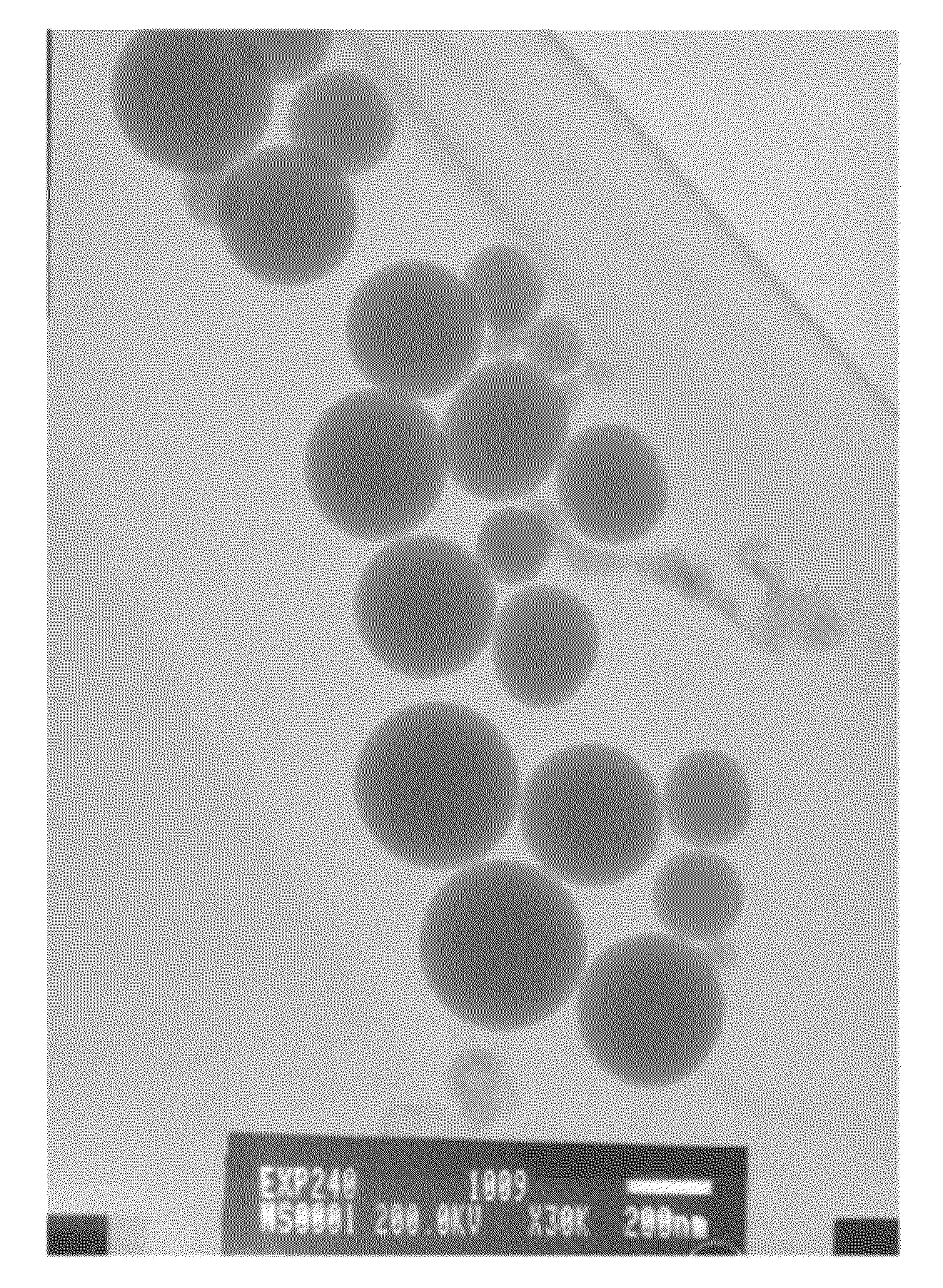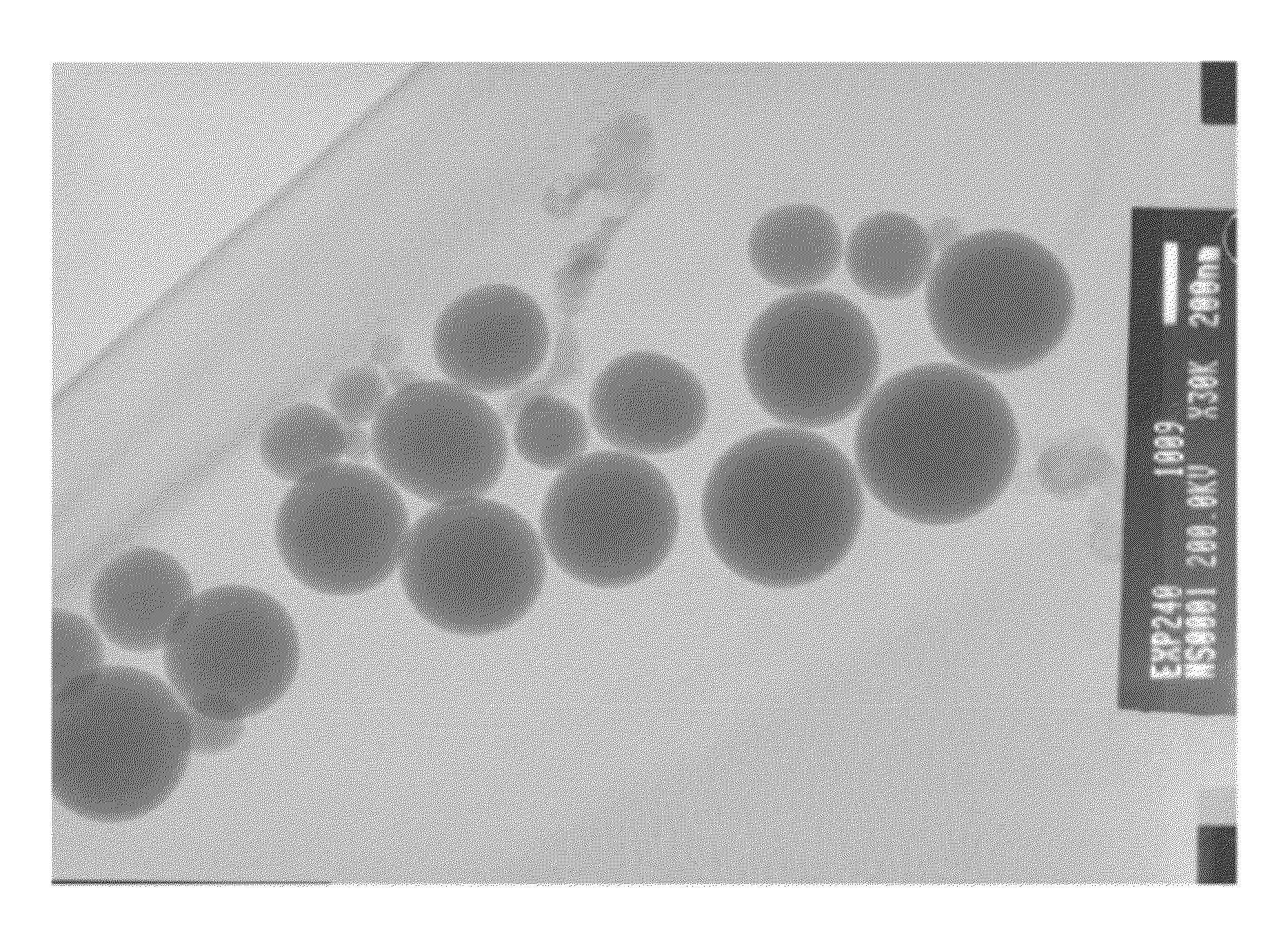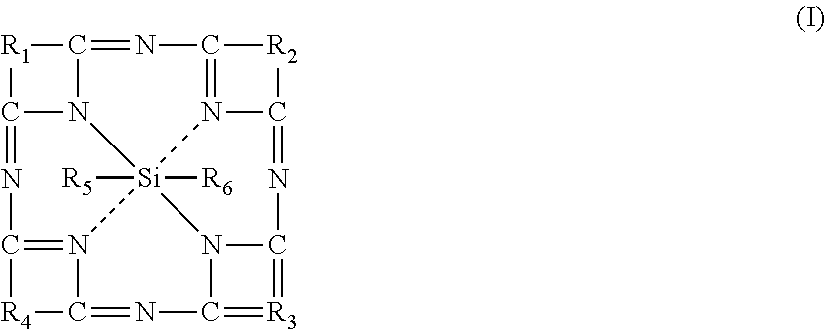Stober method for preparing silica particles containing a phthalocyanine derivative, said particles and the uses thereof
- Summary
- Abstract
- Description
- Claims
- Application Information
AI Technical Summary
Benefits of technology
Problems solved by technology
Method used
Image
Examples
Embodiment Construction
[0123]I. Method for Preparing Silica Nanoparticles According to the Invention
[0124]The preparation of two solutions is needed for the experiment, a first solution containing the hydrolysis agent (ammonia) in alcohol and a second ethanol solution containing the silane phthalocyanine derivative. The reaction mixture is prepared by mixing adequate quantities of ethanol, water and THF, aqueous ammonia solution and TEOS. The ammonia acts as reagent (H2O) and as catalyst (NH4OH) for the hydrolysis of TEOS.
[0125]A first solution (1) is generated by adding in this order the following chemical products: deionized water (2 mL), ethanol (5 mL), THF (6 mL) and 25% aqueous ammonia (1 mL).
[0126]This first solution (1) is added drop-wise to a second solution (2) prepared later, under magnetic agitation, and containing in this order the following chemical products: the silane phthalocyanine derivative (silicon naphthalocyanine dihydroxide, CAS No: 92396-90-2) dissolved in THF (10 mg at 775 g·mol−1 ...
PUM
| Property | Measurement | Unit |
|---|---|---|
| Fraction | aaaaa | aaaaa |
| Fraction | aaaaa | aaaaa |
| Fraction | aaaaa | aaaaa |
Abstract
Description
Claims
Application Information
 Login to View More
Login to View More - R&D
- Intellectual Property
- Life Sciences
- Materials
- Tech Scout
- Unparalleled Data Quality
- Higher Quality Content
- 60% Fewer Hallucinations
Browse by: Latest US Patents, China's latest patents, Technical Efficacy Thesaurus, Application Domain, Technology Topic, Popular Technical Reports.
© 2025 PatSnap. All rights reserved.Legal|Privacy policy|Modern Slavery Act Transparency Statement|Sitemap|About US| Contact US: help@patsnap.com



